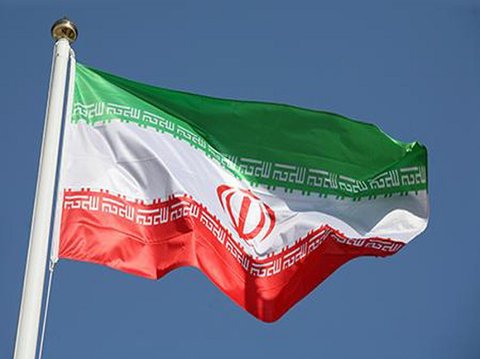Iran (IMNA) - Launched in 2004, Scopus is the largest abstract and citation database of peer-reviewed literature: scientific journals, books, and conference proceedings. Delivering a comprehensive overview of the world's research output in the fields of science, technology, medicine, social sciences, and arts and humanities, Scopus features smart tools to track, analyze and visualize research.
The number of articles indexed by the Iranian researchers on the Web of Science website in 2020 increased by 122 percent compared to that of 2013, which made Iran 16th in the world with 69,779 articles, and first among the Islamic countries for several consecutive years, Gholam Hossein Rahimi, deputy minister of science has said.
This improvement is not limited to the number of articles and the country’s share in terms of top articles (the quality) grew from 0.95 percent in 2013 to 4.28 percent in 2020, which indicates a 350 percent growth in the production of the world’s top articles, he explained.
The growth has not been limited to the field of research and has been very significant in the field of technology; for instance, the creation of 13 science and technology parks, 4,553 technology units, and 1,653 new knowledge-based companies during the last eight years could provide employment for 34,707 university graduates.
Revenue from sales of technological products of companies located in science and technology parks in 2020 was close to 137 billion rials (nearly $3.2 million at the official rate of 42,000 rials), which compared to 4.6 billion rials (about $152,000) in 2013, shows the growth of 2883 percent, he highlighted.
This issue was quite evident in the export sector of these companies so that the export of knowledge-based products was equal to $1.14 million, but this amount increased to $63.2 million in 2018, while reached $98 million in 2020, despite the very harsh sanctions imposed on the country, he stated.
Iran leading the world in ‘science diplomacy’
In November 2020, scientific studies and analyses extracted from the Scopus International Citation Database showed that the rate of scientific contributions of Iranian researchers to the world increased from 17 percent in 2011 to 31 percent in 2020, becoming the world’s leading country in science diplomacy with 14 percent growth.
The development of international scientific partnerships and diplomacy is one of the main policies of Iran, which is also emphasized by the country's higher education system, Mohammad Javad Dehghani, head of the Islamic World Science Citation Center (ISC), said.
One of the most important indicators of scientific participation is the share of the latest joint international scientific findings in the total scientific publications of the country, he added.
In 2016, the share of articles with international participation in total science production of the country was 20 percent, which reached 22-24-27-31 over the past 4 years, respectively.
“The share of articles with international participation has accelerated from the total number of articles produced in all subject areas. But comparing 2019 with 2018, the fields of humanities and basic sciences have had the highest growth rate.
In 2019, about 30 percent of the scientific publications in the field of basic sciences with the participation of international researchers held the highest share among other fields.
After that, the articles of two fields of technology, engineering, and agricultural sciences are in the next position with 29 percent publications, then comes social science and medical science,” according to Dehghani.
Iranian universities performance
Times Higher Education has published its annual ranking of the world’s top universities for 2021, listing 47 Iranian universities, which shows an increase of 7 universities compared to the last year.
With 47 Iranian universities ranked among 1,527 top universities of 93 countries in the world in 2021 rankings, Iran achieved a great improvement in the academic field.
Some 21 Islamic countries were also listed in the ranking, however, Iran holds the highest share with 47 universities.
With a scientific growth rate of 10.4 percent in 2019, Iran ranked second among the top 25 countries in the world, next to China with a growth rate of 12.9 percent, according to the Web of Science website.
According to statistics released by the International Web of Science Database, Iran's citation rank has always been on the rise over the last eight years, from 24 in 2012 to 16 in 2019.
Iran ranks first in terms of the number of universities in the region and among Islamic countries, according to Shanghai Ranking’s Academic Ranking of World Universities (ARWU) 2020.
Two Iranian universities have been ranked among the top 100 universities in Asia, according to Webometrics Ranking of World Universities for July 2020.
Moreover, 7 Iranian universities have been listed among the best 1000 worldwide; including, Tehran University of Medical Sciences, Shahid Beheshti University of Medical Sciences, Sharif University of Technology, Tarbiat Modares University, Ferdowsi University of Mashhad, Isfahan University of Technology, Iran University of Science and Technology.
In June 2020, THE Asia University Rankings 2020 ranked five Iranian universities among the top 100 universities worldwide.
The Center for Science and Technology Studies Leiden Ranking has placed 36 Iranian universities in the list of over 1,000 major universities worldwide in 2020 compared with 26 universities in 2019.
Also, five Iranian universities have been placed among the world’s top 1,000 universities announced by the prestigious Quacquarelli Symonds (QS) World University Rankings 2021.
By Faranak Bakhtiari
Tehrantimes


Your Comment